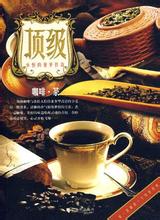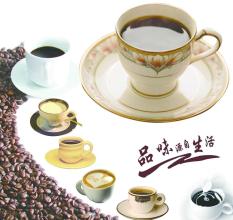Coffee beans roasting degree difference Nine degrees of nutrition Italian flavor treatment characteristics Quality introduction
Burundi coffee beans
1. Light Roast:
Degree of baking; very light baking, aka light baking.
The lightest degree of roasting of all stages, the beans have a light cinnamon color on the surface, and their taste and aroma are insufficient to make them almost inedible. It is usually used for testing and rarely used for tasting.
2. CINNAMON Roast:
Degree of roasting; light roasting, aka cinnamon roasting.
General roasting degree, cinnamon color on the appearance, odor green flavor has been removed, aroma is acceptable, strong acidity, for American coffee often used a degree of roasting.
3. Medium Roast:
Degree of roasting; medium roasting, also known as slightly medium roasting.
Medium and light roasts are both American. In addition to sourness, bitterness also appears, and the taste is good. Aroma, acidity, alcohol moderate, often used for mixed coffee roasting.
4, medium baking (HIGHRoast):
Degree of roasting; medium, slightly dark roasting, also known as solid roasting.
It belongs to medium and slightly dark baking, slightly stronger than medium baking, with a little dark brown on the surface and a stronger bitter taste. Coffee tastes sour and bitter, aroma and flavor are good, most often loved by Japanese and Central European people. Blue Mountain Coffee
Generally speaking, the lighter the baking degree, the more sour, as the baking degree deepens, sour will gradually disappear, bitter is more prominent. The degree of roasting varies from bean to bean. For example, mocha is suitable for light roasting, and Brazilian Colombia is suitable for medium roasting or medium deep roasting. Depends on what kind of bean you are! What kind of roasting produces the most delicious coffee? In fact, the depth of roasting, must be based on the type of coffee beans, characteristics, brewing methods, usage, the most important is personal preferences and other conditions, to determine the most appropriate degree of roasting generally on the degree of roasting, the most rough can be divided into shallow fried, medium fried, deep fried and other three stages. Coffee beans vary in taste and aroma due to the degree of roasting. Later, around 1000 AD, coffee beans were boiled into soup. It wasn't until the 13th century that Arabs invented the method of roasting coffee beans, which completely extracted the fascinating aroma unique to coffee, and made coffee no longer just a pure refreshing agent, but a worldwide beverage. Later, they took coffee beans out of the fruit and ground them, and then mixed them with animal fat. As a physical supplement when caravans traveled to distant places, coffee beans were first discovered by Arabs, and the first way to eat coffee was also unexpected. They chew the whole fruit directly into their mouths to extract the juice
The deeper the roast, the higher the temperature of the roast. In general, light to moderate "Northern" baking flavors are brighter and lighter, possibly with fruity acidity and minimal or no bitterness. The deep-baked "Southern Italy" has a low, rich and smooth flavor with a caramel-like sweet finish. "French roast" has a monotonous flavor, may have a slight charred flavor, and is completely acid free.

Important Notice :
前街咖啡 FrontStreet Coffee has moved to new addredd:
FrontStreet Coffee Address: 315,Donghua East Road,GuangZhou
Tel:020 38364473
- Prev

Introduction to the main characteristics of espresso, flavor description, grinding degree and taste of varieties
Italian coffee bean latte: latte is made with coffee, milk and milk foam according to the proportion of 1:1:1, showing a layer of state, because the proportion of milk has reached 2/3, so the latte is milky coffee, suitable for people who like milk. Cappuccino: Italian fancy coffee is popular among young people because of Xiao Yaxuan's song of the same name.
- Next

Yunnan, China Description of Coffee Flavor Processing Characteristics Introduction of Grinding Degree
Iron pickup (typica): The most classic high-quality Arabica species, many commercial improved species are now derived from this. Excellent taste performance, is recognized as a fine coffee variety, but the yield is extremely low and susceptible to rust disease, requiring more manual management. Tiekka coffee is native to Ethiopia and southeastern Sudan and is the most widely cultivated coffee variety in the Western Hemisphere. plants
Related
- Beginners will see the "Coffee pull flower" guide!
- What is the difference between ice blog purified milk and ordinary milk coffee?
- Why is the Philippines the largest producer of crops in Liberia?
- For coffee extraction, should the fine powder be retained?
- How does extracted espresso fill pressed powder? How much strength does it take to press the powder?
- How to make jasmine cold extract coffee? Is the jasmine + latte good?
- Will this little toy really make the coffee taste better? How does Lily Drip affect coffee extraction?
- Will the action of slapping the filter cup also affect coffee extraction?
- What's the difference between powder-to-water ratio and powder-to-liquid ratio?
- What is the Ethiopian local species? What does it have to do with Heirloom native species?

